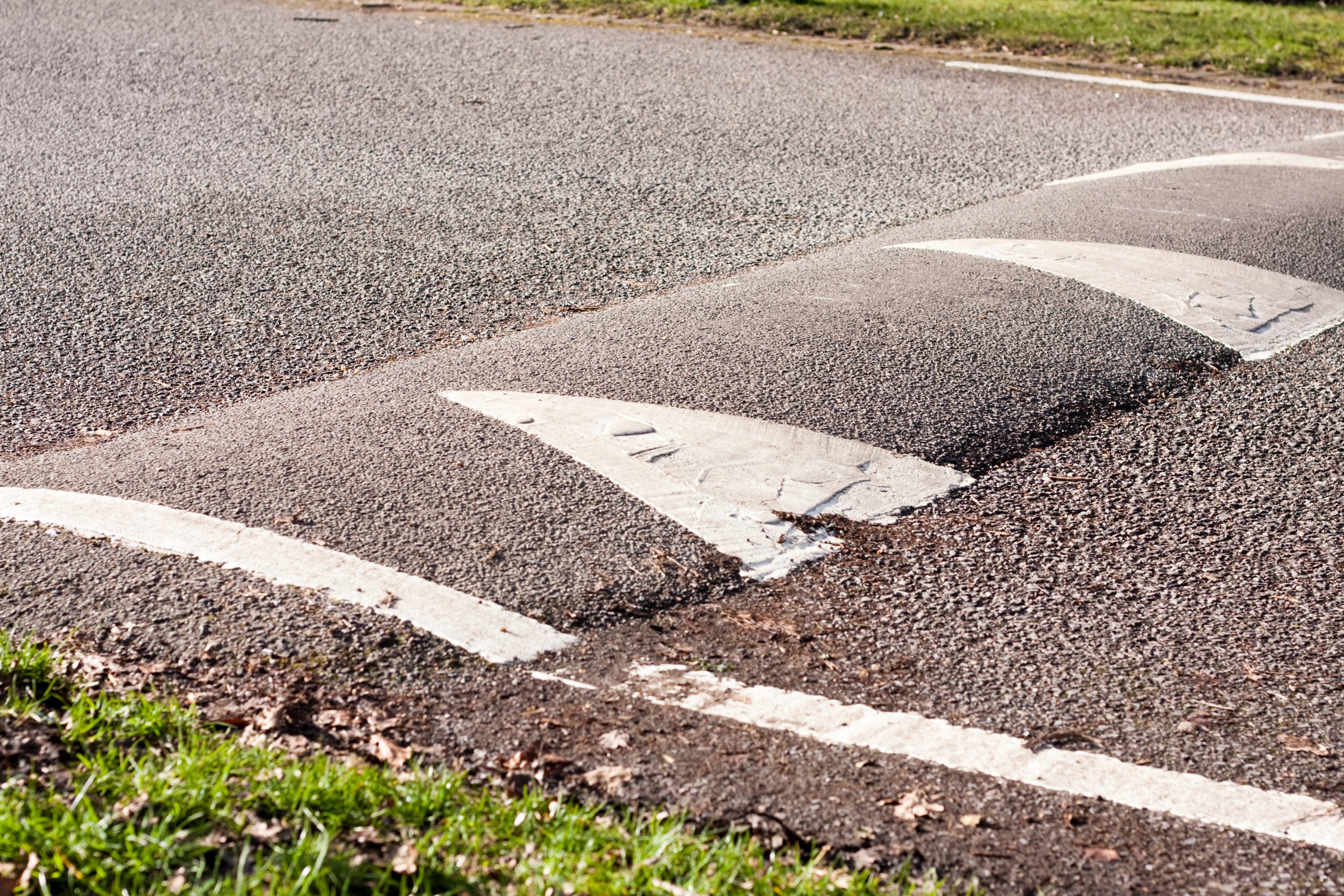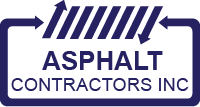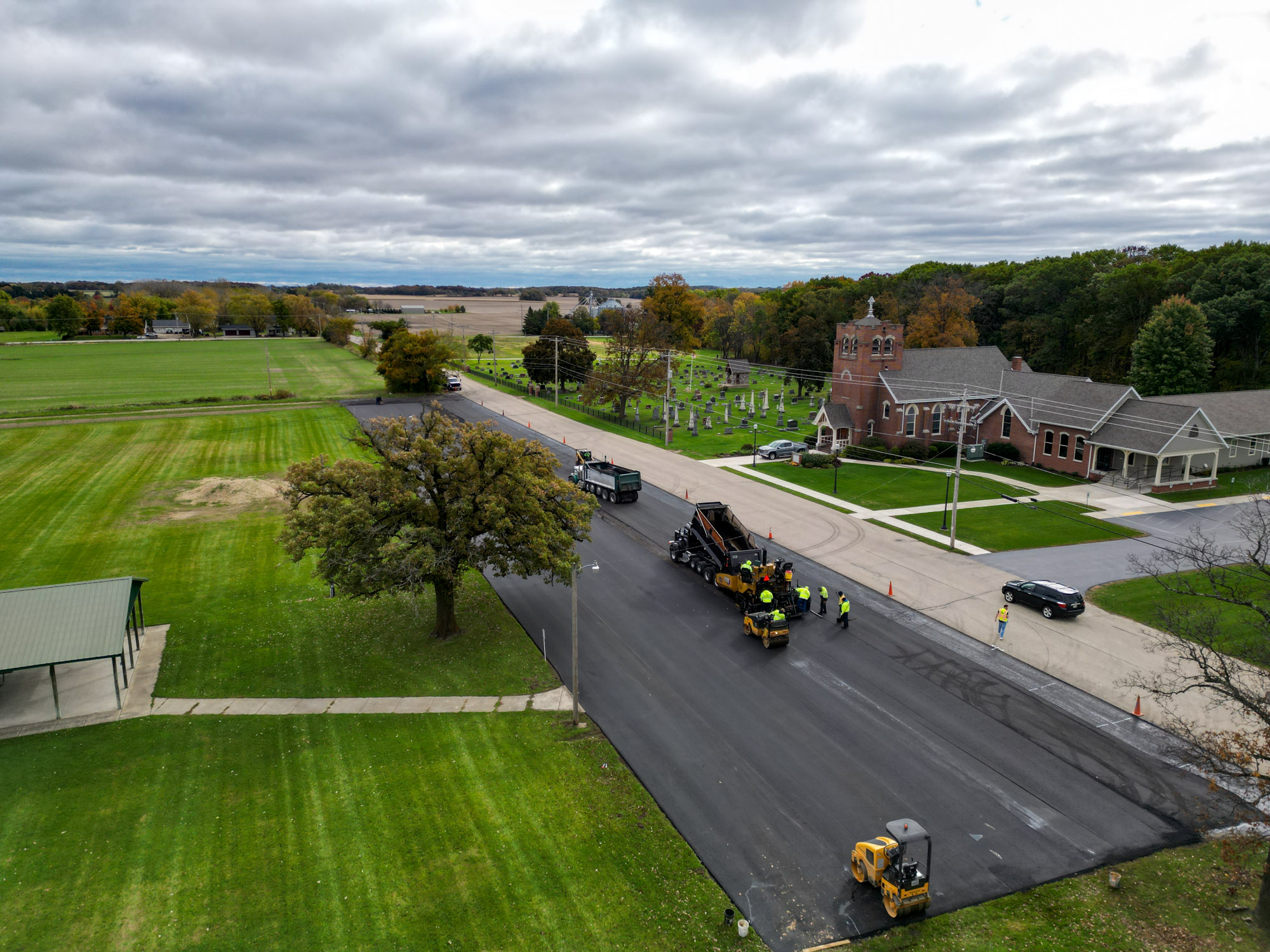Speed bump vs speed hump vs speed table: what calms traffic without complaints

Speed bump vs speed hump is a common comparison for neighborhoods, schools, and business parks looking to slow drivers without creating frustration. There is also a third option called the speed table that can offer a smoother ride while still lowering speeds. This guide explains how each feature works, where each one fits best, and what they cost so you can choose the right traffic calming solution with fewer complaints. Speed bump vs speed hump: compare speed tables, pros, cons, and costs to see what calms traffic without complaints. Discover the best fit for your street now.
Asphalt Contractors Inc. is a trusted paving partner for Southeast Wisconsin. We plan, design, build, and maintain asphalt and concrete traffic calming systems that respect safety, budgets, and local requirements. If you are weighing your options, our team can help you pick and place the right solution for your street or parking area.
What is a speed bump
A speed bump is a short, raised ridge that forces drivers to slow almost to a crawl. It is the most aggressive vertical traffic calming device and is commonly seen in private parking lots where very low speeds are the goal.
- Typical height: 3 to 4 inches
- Typical travel length: 1 to 3 feet
- Target speed: 2 to 10 miles per hour
- Common materials: asphalt, concrete, rubber, or composite
Because bumps are short and steep, they cause a quick up-and-down motion. This makes them effective at lowering speeds in tight areas like crosswalks within a lot, service drives, and loading zones. Bumps are usually not recommended on public streets because they create discomfort at normal residential speeds and can increase noise if frequently crossed by trucks or buses.
What is a speed hump
A speed hump is a longer, rounded feature that spans the width of the roadway. It is designed to slow traffic to neighborhood speeds without forcing a complete stop.
- Typical height: 3 to 4 inches
- Typical travel length: 12 to 14 feet
- Target speed: 15 to 20 miles per hour
- Common materials: asphalt or concrete, sometimes rubber modules
Humps create a gentler rise and fall compared to bumps. Drivers who approach at the posted limit feel a smooth roll. Drivers who approach too fast feel a noticeable jolt, which encourages compliance. Humps are common on residential streets, near parks, and on low-speed collectors that serve schools and community facilities.
What is a speed table
A speed table is a long flat-topped section of raised pavement. It works like a broad plateau with short ramps on each side. If a crosswalk is placed on the flat section, it is often called a raised crosswalk.
- Typical height: 3 to 3.5 inches
- Typical ramp length: 6 to 7 feet per side
- Typical flat top length: 10 to 20 feet
- Target speed: 20 to 30 miles per hour depending on design
Because the flat top supports the vehicle evenly, tables are comfortable at moderate speeds and tend to generate fewer complaints from transit operators, emergency responders, and neighbors. They are often used on routes that need traffic calming but also carry buses, fire trucks, or steady volumes of delivery vehicles.
Speed bump vs speed hump vs speed table: the key differences
At a glance, bumps, humps, and tables all raise the pavement, but they serve different goals. The best choice depends on target speeds, roadway type, and user mix.
- Speed control strength: bumps slow the most, humps slow significantly, tables slow moderately
- Driver comfort: tables are smoothest, humps are moderate, bumps are harshest
- Noise potential: bumps highest, humps moderate, tables lowest
- Emergency and bus impact: tables least impact, humps moderate, bumps most impact
- Best locations: bumps for private lots, humps for residential streets, tables for bus and emergency routes and school crossings
When comparing speed bump vs speed hump, think about your target operating speed. If you need 5 mile per hour behavior in a parking lot, a bump is suitable. If you need 15 to 20 mile per hour behavior on a neighborhood street, a hump is a better fit. If you need to cut speeds near a crosswalk without frequent complaints, a speed table can be ideal.
Pros and cons of each option
Speed bumps
- Pros: lowest installation cost in many cases, strong speed reduction, quick to install, flexible placement in lots
- Cons: uncomfortable ride, higher noise, harder on suspension and plows, not suitable for public streets, more complaints if used on through routes
Speed humps
- Pros: effective at neighborhood speeds, proven safety benefits for residential settings, compatible with most snow plowing, moderate cost
- Cons: can slow emergency response slightly, some driver discomfort, needs careful spacing and signage
Speed tables
- Pros: comfortable at moderate speeds, works well with buses and emergency vehicles, ideal for raised crosswalks, generally fewer noise complaints
- Cons: higher cost than humps and bumps, requires more space, needs precise drainage and ADA planning
Cost ranges and timelines
Costs vary by site conditions, width, material, and local standards. The ranges below are typical estimates for planning. A formal quote requires a site visit and design review.
- Speed bump: about 1,000 to 3,000 dollars per device for asphalt or concrete, 70 to 150 dollars per linear foot for modular rubber systems
- Speed hump: about 2,500 to 7,000 dollars per device depending on width, material, and markings
- Speed table or raised crosswalk: about 5,000 to 15,000 dollars per device depending on length, crosswalk features, and drainage needs
Installation timelines are usually short. A single bump or hump can often be installed in less than a day with striping added after curing. A speed table can take one to two days depending on traffic control, surface markings, and concrete curing if used. Asphalt Contractors can stage work to keep access open and reduce disruption.
Materials and maintenance
Material choice affects the ride, durability, and maintenance schedule. Asphalt, concrete, and modular rubber each have tradeoffs.
- Asphalt: smooth ride, blends with existing pavement, cost effective, typical lifespan 5 to 10 years with periodic sealing and repainting
- Concrete: crisp shape and long life, resists rutting, higher upfront cost, typical lifespan 10 to 20 years with minimal upkeep
- Rubber or composite: quick install, removable, clear profile, best for private lots or pilot projects, lifespan varies 3 to 8 years based on traffic and climate
In Wisconsin’s freeze and thaw cycles, proper base preparation and drainage are essential. Asphalt Contractors manufactures its own asphalt mixes, which helps ensure consistent quality and cost control. Our team uses the right mix design for each application and applies reflective markings that stand up to winter weather.
Placement and design best practices
Good design is the difference between effective traffic calming and daily complaints. Plan the layout before you pave.
- Set the target speed for each segment of roadway
- Choose the device that matches the target speed and vehicle mix
- Place devices in a series when needed, typically 260 to 500 feet apart for humps
- Align devices with existing crosswalks or pedestrian generators when possible
- Use advance warning signs and pavement markings so drivers see them early
- Add lighting and reflective panels where night visibility is limited
- Confirm drainage. Do not trap water on the uphill side
- Coordinate with snow operations. Provide smooth ramp transitions
- Include ADA compliant crosswalk details on raised tables
- Pilot test rubber devices in sensitive areas before committing to permanent construction
How to reduce complaints
Every community wants safer speeds with less frustration. Use these steps to lower the risk of complaints.
- Pick the right device for the setting. Reserve bumps for low-speed private lots
- Match the number of devices to roadway length so speeds cannot rebound
- Use speed tables near schools and transit to limit discomfort for buses
- Provide clear notice before installation and ask for resident input
- Install high-visibility markings and signs to avoid unexpected jolts
- Verify emergency response routes and involve public safety in the design
- Maintain markings. Most complaints drop when drivers can see devices clearly
When you compare speed bump vs speed hump, remember that comfort and context matter as much as speed reduction. Tables often win on high-traffic streets because they balance control and drivability.
Winter, plows, and drainage
In Southeast Wisconsin, winter operations are a key design factor. Plow blades can catch on steep transitions or on older bumps that have settled. Properly tapered approaches and durable edge markings help drivers and plow operators navigate safely. Drainage must let meltwater flow away from the raised area to prevent ice build-up. Asphalt Contractors designs slopes and joints to handle snow and freeze cycles while keeping maintenance simple.
Permits and local standards
Public streets usually require municipal approval and engineering review. Standards address slope, spacing, signage, reflectivity, and emergency access. Private parking lots often have more flexibility but should follow best practices to limit liability. Our team at Asphalt Contractors coordinates with local agencies across Racine, Kenosha, Walworth, Waukesha, and Milwaukee counties to streamline approvals and keep projects compliant.
About Asphalt Contractors Inc.
Asphalt Contractors Inc., established in 1979 and based in Union Grove, Wisconsin, is a full-service paving contractor with a four-decade track record. We provide asphalt paving, maintenance, milling and pulverizing, concrete construction, site preparation, asphalt manufacturing, specialty services, and crushing. By manufacturing our own asphalt, Asphalt Contractors maintains consistent quality and delivers cost savings. Our certified crews and modern equipment allow us to finish work efficiently and to high standards. We serve Southeast Wisconsin communities with reliable, professional paving solutions designed to last.
Which option is right for your site
Parking lots and private drives
Choose speed bumps near building entrances, pedestrian crossings inside the lot, and areas where speeds must be near walking pace. Consider rubber modules for a pilot or seasonal control.
Residential streets and local roads
Choose speed humps on neighborhood streets where the goal is 15 to 20 miles per hour. Space them consistently to keep speeds down along the entire block. Add signs and reflective markings for night visibility.
School zones, bus routes, and emergency corridors
Choose speed tables, especially raised crosswalks at key crossings. Tables calm speeds while offering a smooth ride for buses and lower delay for emergency vehicles. They are also more comfortable for people using wheelchairs and strollers when designed with proper ramp slopes.
FAQs
Which calms traffic with the fewest complaints
Speed tables usually generate the fewest complaints because they balance speed control with ride comfort. Speed humps are next, especially on residential streets. Speed bumps work best in lots where drivers expect very low speeds. When discussing speed bump vs speed hump, consider your drivers. Residents and delivery vehicles accept humps more readily than bumps on through streets.
Do humps and tables slow emergency response
Yes, there is some delay, but design affects the amount. Tables cause less delay than humps, and bumps cause the most. If an area is part of a primary emergency route, a speed table or other measures like chicanes and curb extensions may be a better choice.
How many devices per block are needed
For humps, spacing of 260 to 500 feet is common. The goal is to keep speeds steady between devices. Your street length, curves, and driveways will guide final spacing. Asphalt Contractors will model speeds and recommend a layout that achieves the target while limiting the number of devices.
Are these devices safe for buses and trucks
Speed tables are the most bus friendly. Humps can work with buses if designed correctly. Bumps are not recommended on bus routes. Properly tapered approaches and clear markings are important for larger vehicles.
Will snow plows damage them
Well designed humps and tables with smooth transitions are plow compatible. Bumps can be more vulnerable, especially modular units. Using durable materials, correct heights, and reflective edge markers reduces plow damage. Asphalt Contractors designs with winter in mind and can repair seasonal wear quickly.
What markings and signs do I need
Use advance warning signs before the first device, advisory speed plaques when appropriate, and high-contrast pavement markings on each device. At night, reflective elements improve visibility. Markings also reduce liability by giving drivers clear notice.
How long do they last
Asphalt humps and tables typically last 5 to 10 years before resurfacing or re-striping is needed. Concrete versions can last 10 to 20 years. Rubber modules vary from 3 to 8 years depending on traffic and climate. Routine maintenance and sealcoating extend service life.
What if my neighborhood is divided on the choice
Consider a pilot with temporary or modular devices to collect data and feedback. If residents find bumps too harsh, you can shift to humps or a table layout. Asphalt Contractors can design and install a pilot so your community makes a data-informed decision.
A simple selection framework
- Define the problem: speeding, cut-through traffic, or pedestrian safety
- Set a target speed for the block or lot
- Match the device to the target speed and user mix
- Check emergency and transit routes
- Plan spacing and visibility
- Confirm budget, materials, and maintenance plan
- Engage neighbors and the local agency if public right of way
- Install a pilot if needed, then finalize the permanent design
Why choose Asphalt Contractors for your project
Asphalt Contractors delivers traffic calming solutions that work from day one. We combine planning and public input with precise construction. Because we manufacture our own asphalt, we control quality and cost, and we can match the mix to your site’s needs. Our crews handle everything from milling to final striping, which means fewer delays and a cleaner finish.
- Local expertise in Southeast Wisconsin climates and soils
- Full-service capabilities in asphalt and concrete construction
- Modern equipment for efficient, high-quality results
- Experienced team that coordinates with municipalities and utilities
- Clear schedules, transparent pricing, and dependable warranties
Whether you need a single speed table at a school crosswalk or a complete residential traffic calming plan with humps and signage, Asphalt Contractors has the skill and resources to do it right.
Get a site assessment and quote
Ready to choose between a speed bump vs speed hump or a speed table for your street or lot. Asphalt Contractors will evaluate traffic speeds, sight lines, drainage, winter operations, and neighborhood concerns. We will then propose the best device, layout, and materials for your goals and budget. Contact our Union Grove team to schedule a site assessment anywhere in Racine, Kenosha, Walworth, Waukesha, or Milwaukee counties. Let us help you calm traffic without the headaches and deliver a solution that stands up to Wisconsin weather.


